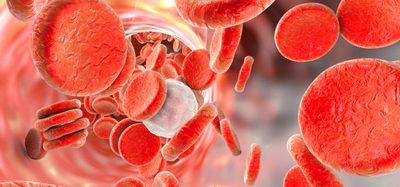CRISPR RNA-targeted genetic screen could be used for COVID-19 therapy
Posted: 18 March 2020 | Hannah Balfour (Drug Target Review) | No comments yet
A new Cas13 RNA screen has been used to establish guide RNAs for the COVID-19 coronavirus and human RNA segments which could be used in vaccines, therapeutics and diagnostics.

A novel CRISPR-based editing tool that enables researchers to target mRNA and knockout genes without altering the genome has been developed. Using the CRISPR-Cas13 enzyme, researchers have created a genetic screen for RNA, currently designed for use on humans, which they say could also be used on RNA containing viruses and bacteria.
The developers have used their parallel-screening technique to create optimal guide RNAs for the SARS-CoV-2 coronavirus COVID-19 which could be used for future detection and therapeutic applications. These have been made available online here.
…the seed regions could be used as next-generation biosensors, able to precisely discriminate between closely related RNA species”
The CRISPR RNA screening technology was developed by researchers in the lab of study senior author Dr Neville Sanjana at the New York Genome Center and at New York University, both US. The platform is optimised to run massively-parallel genetic screens at the RNA level in human cells because it is based on the CRISPR-Cas13 enzyme, which targets RNA instead of DNA. According to the researchers, it could be used to understand aspects of RNA regulation and identify the function of non-coding RNAs in humans.
The team have used the data they collected by targeting thousands of different sites in human RNA transcripts to create a machine learning-based predictive model to expedite identification of the most effective Cas13 guide RNAs. This technology is available to researchers through a website and open-source toolbox, both can predict guide RNA efficiencies for custom RNA targets and provide pre-designed guide RNAs for all human protein-coding genes.
“We anticipate that RNA-targeting Cas13 enzymes will have a large impact on molecular biology and medical applications, yet little is known about guide RNA design for high targeting efficacy,” said Dr Sanjana. “We set about to change that through an in-depth and systematic study to develop key principles and predictive modelling for most effective guide design.”
Dr Hans-Hermann Wessels and PhD student Alejandro Méndez-Mancilla, co-first authors of the study published in Nature Biotechnology, developed a suite of Cas13-based tools and conducted a transcript tiling and permutation screen in mammalian cells. In total, they gathered information for more than 24,000 RNA-targeting guides.
“We tiled guide RNAs across many different transcripts, including several human genes where we could easily measure transcript knock-down via antibody staining and flow cytometry,” said Dr Wessels. “Along the way, we uncovered some interesting biological insights that may expand the application of RNA-targeting Cas13 enzymes.” These insights included which regions of the guide RNA are important for recognition of a target RNA, calling the identified segments ‘seed’ regions – these are vital for designing guide RNAs with off-target activity on unintended target RNAs.
The scientists suggest that the seed regions could be used as next-generation biosensors, able to precisely discriminate between closely related RNA species.
“We are particularly excited to use the optimised Cas13 screening system to target non-coding RNAs. This greatly expands the CRISPR toolbox for forward genetic and transcriptomic screens,” concluded Méndez-Mancilla.
Related topics
Analytical Techniques, CRISPR, Disease Research, Drug Targets, Gene Testing, RNAs, Screening, Technology
Related conditions
Coronavirus, Covid-19
Related organisations
New York Genome Center, New York University
Related people
Alejandro Méndez-Mancilla, Dr Hans-Hermann Wessels, Dr Neville Sanjana







